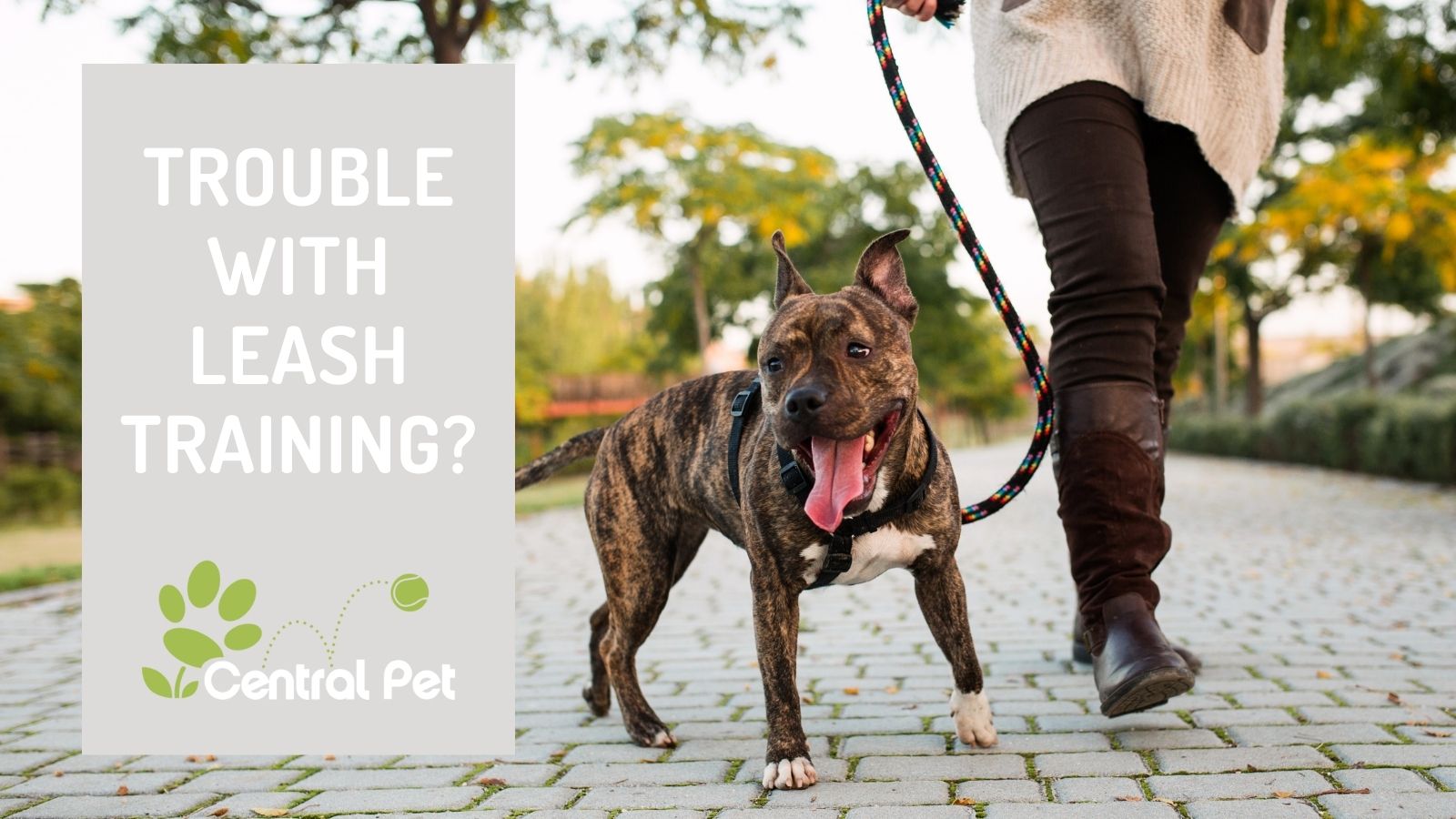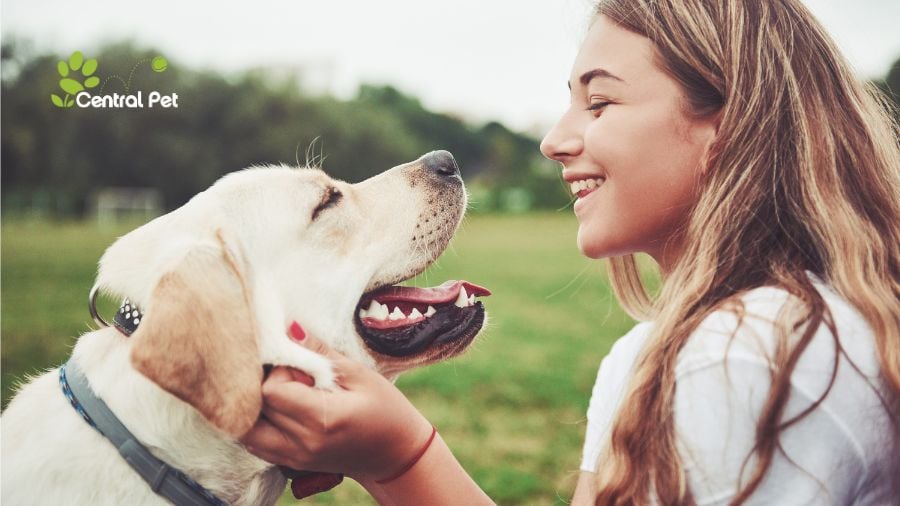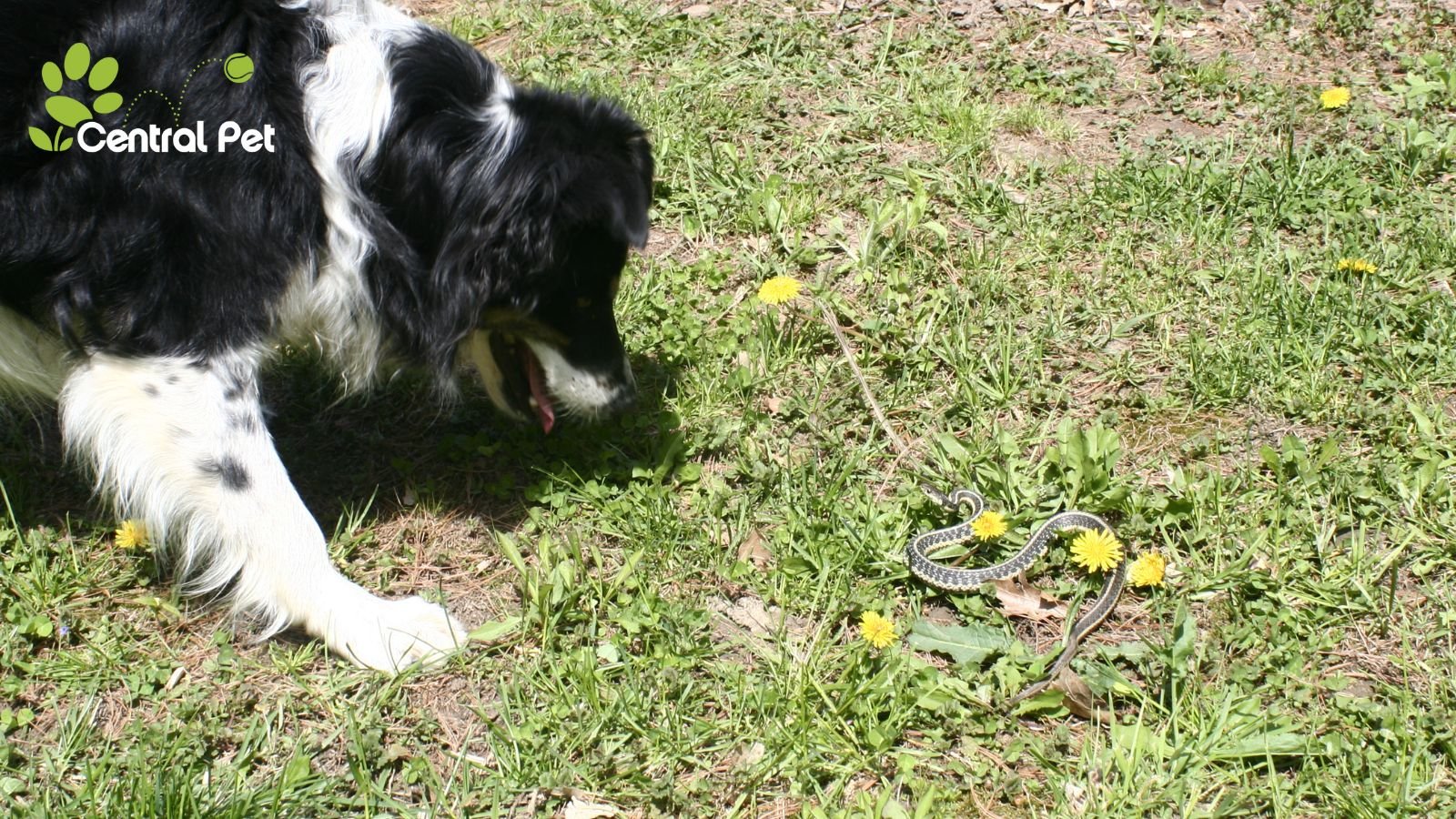Walking your dog can be a struggle in a world filled with other dogs, bushes and trees to sniff, and the occasional squirrel. But if he’s trained on how to behave when on a leash, you’re both going to enjoy the time you spend together on walks. Whether you have a senior dog or a puppy, they can learn how to walk calmly on a leash.
Before we get to the leash training tips, there are a few things you will need to know and possibly have on hand.
Types of Dog Collars and Leashes
- Collar - Your dog’s collar should fit comfortably around the neck so that it’s not too loose or too tight. You want to be sure that the collar is strong enough to have a leash securely attached to it. Also, make sure that the collar is designed for your dog’s size and breed.
- Headcollar - This is a collar that also includes a strap around the dog’s nose and another behind her ears. Because it’s attached to the leash under their chin, dogs find it uncomfortable to pull on the leash while wearing it. It doesn’t cause the dog pain but makes it difficult to keep pulling.
- Muzzle - If your dog tends to show aggression towards other people or animals, using a muzzle may make it possible to walk your dog. A word of caution, however. Professional training is often the best way to go for dogs that need a muzzle. A trainer can not only help your dog get used to walking on a leash but also learn to show less aggression towards others. If you introduce a muzzle, do it slowly and with positive reinforcement.
- Harnesses - A harness is a type of leash that wraps around the dog’s chest and back. Especially good for smaller dogs, it can also be helpful when training your dog not to pull on walks.
- Leash - There are two types of leashes to consider:
- Standard leashes include rope, cord, or plastic. This is generally what should be used while training.
- Retractable leashes allow for more freedom for the dog and more control for the owner to use at specific distances.
General Tips for Leash Training Your Dog
Any type of dog training is going to take patience. Every dog is different and may require more time to learn and adapt to a leash. Here are a few general leash training tips to keep in mind:
- Allow your pup to see the leash and get used to it before starting leash training. Show it to your pup and allow them to become familiar with it. This allows your pup to recognize the leash as something normal, neutral, and not something that is given as a punishment.
- If your dog requires a harness or muzzle while walking, make sure that you also allow them some time to get used to it before you take a walk. Just like a leash, you want to be sure that you never use it as a punishment, and it’s something that your dog connects with a good experience.
- A good rule of thumb is to make sure that your dog is completely calm at the leash training’s start and end. You want to be sure that your dog is as neutral as possible so that you can safely get the leash on before you begin the walk.
- Treats! Who doesn’t love treats? To help your dog stay motivated, try to incorporate treats in your regular leash training routine.
Ready to Start Walking Your Dog on a Leash?
Once you’ve incorporated the tips above, it’s time to start walking your dog. It’s a good idea to start somewhere small and safe, such as the inside of your home. This is an area that you can control better as far as distractions.
Once your dog is ready to transition to outside walks, then it’s time to step up and ensure that your attention is entirely on your pup. Being outside causes a great deal of excitement for your four-legged friend, so it is recommended that you begin training in a large open area with not a lot of distractions.
You might also be interested in reading: Basic Commands Every Dog (and Dog Owner) Should Know.
Be The Leader of The Walk
Handling distractions is one of the most critical things to teach your dog during leash training. Sometimes, you may have to change directions so that your dog can avoid the distraction altogether. Teaching your dog to walk by your side and focus on you will help maintain control and avoid distractions as they come up. This helps associate you as the leader of the walk and allows even more control in certain situations.
That being said, distractions do happen, and your dog may want to pull on the leash to take you where they want to go. Don’t allow your dog to take the lead – remember that you’re in charge of the walk. It’s important to maintain control and immediately stop walking when they start pulling. Continuing to allow your dog to pull will create bad habits for the future.
What to Do When Your Dog Pulls While Walking
Dogs, or puppies, that are new to walking on a leash might pull because they’re excited, and you’re slower than they are. Leaving the house is an exciting moment for your dog, and they want to explore the outside smells, sounds, and sights. When you get outside, give him a moment in your driveway or on your front step to simply take everything in. Stand in one spot, and let them have free range to the end of the leash, in any direction. Once they are calm, then you can start your walk. If the dog starts to pull while walking, pause and repeat the process of standing still until they’ve calmed down.
Pulling on their leash typically gets them going somewhere causing a rewarding feeling for your dog. It is your responsibility to teach them that being calm will result in a rewarding experience.
If your dog is this excited when going for a walk, here are a few things to try to avoid the leash pulling:
- Use a No-Pull or chest harness. Our trainers recommend the Easy Walk Harness. These are designed to help train your dog from pulling while on a walk. When selecting a harness, make sure it is the right size and fit for your dog.
- Don’t hold the leash tight. Your dog will continue to pull on a tight leash, even when it is hindering their breathing. This will create bad habits when your dog is walking on a leash.
- Be consistent with your leash training. Their leash skills will not be good if you are strict while on walks sometimes and allow them to pull on the leash other times.
- Remember the treats we mentioned earlier? Reward them when they listen to you and don't pull on the leash.
How to Help a Dog Who is Afraid of the Leash
You can also try using treats if your dog is deathly afraid of the leash and refuses to walk with it. This, along with a great deal of patience, can help them overcome their fear. Every step counts, and if you can get your dog to move even a few steps, then that is certainly a small victory. Be consistent and patient as your dog warms up to the idea of wearing a leash and learning to walk with you.
Dog Training Makes for a Happier Home
Leash training a puppy or dog can be difficult even for seasoned pet owners. Don’t hesitate to reach out to us for additional leash training assistance. At Central Pet Arizona, we know that your furry friend is more like family. That is how we treat every animal that comes to our facility. Whether you need grooming, boarding, training, or daycare services, we can help.






